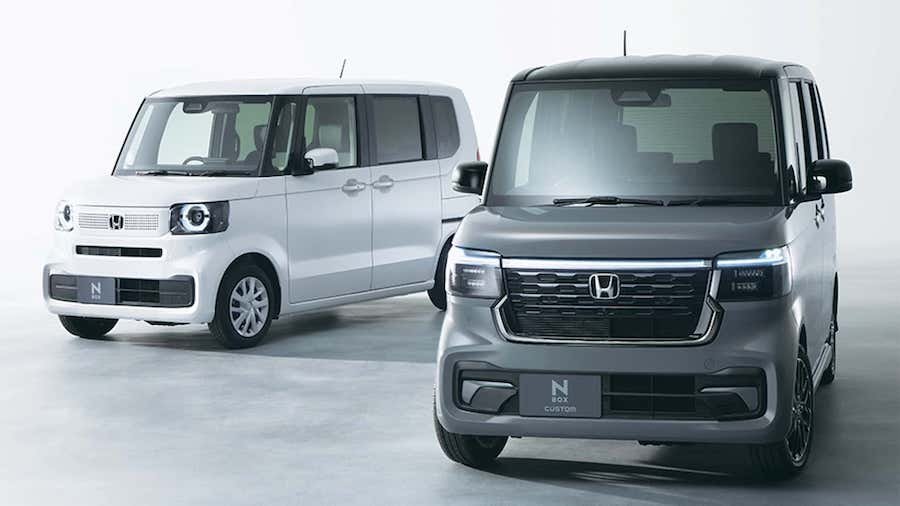New Honda N-Box Debuts With Tiny Wheels, Huge Interior Space

The first-generation Honda N-Box went on sale in Japan in 2011. As its name implied, the small model had a very square appearance. The automaker premiered the third-gen N-Box before beginning deliveries in Japan this fall. The company starts taking orders in August, but pricing isn't yet available.
Like the previous two generations, the latest N-Box is still boxy. Now, even the headlights have square surrounds. There's a stumpy nose; the rest is for the passenger compartment. The rear doors slide open like you'd find on a minivan. An optional Fashion Style package adds off-white elements to the mirrors and door handles, in addition to body-color wheel caps.
Buyers can upgrade to the N-Box Custom trim level with hexagonal grille mesh rather than the tiny circles on the standard model. The higher trim level comes standard with LED headlights and clear taillamps instead of red. An optional Coordination Style package adds dark chrome to the grille and rear license plate surround, in addition to black aluminum wheels.
The N-Box's cabin features a 7.0-inch digital instrument cluster and a 9.0-inch infotainment display. The dashboard features a storage tray that extends into the passenger side. The N-Box Custom is available with leather upholstery.
Honda isn't yet outlining the new N-Box's specific dimensions but claims the N-Box has the largest interior space in its class. The rear seats fold flat to provide more cargo room in the cabin. The front chair can recline to be nearly flat.
All versions of the N-Box are available with front- or all-wheel drive. The launch announcement mentions naturally aspirated and turbocharged engines but doesn't include output info. Japan's kei car class limits these vehicles to 63 horsepower and a powerplant displacement of 660cc.
The rules say a kei car can not be longer than 11 feet (3.4 meters), wider than 4.9 feet (1.48 meters), and taller than 6.6 feet (2 meters). The resulting vehicles tend to be boxy as a way to maximize the limited passenger space. Although, there have been sporty kei cars like the Honda Beat, Honda S660, Mazda Autozam AZ-1, and Suzuki Cappuccino.
Kei cars are a significant part of the Japanese-market auto industry. They held 34.1 percent of the market in 2002, accounting for 1.17 million vehicles sold. The N-Box was the most popular model in the segment last year, moving 202,200 units.



Related News


